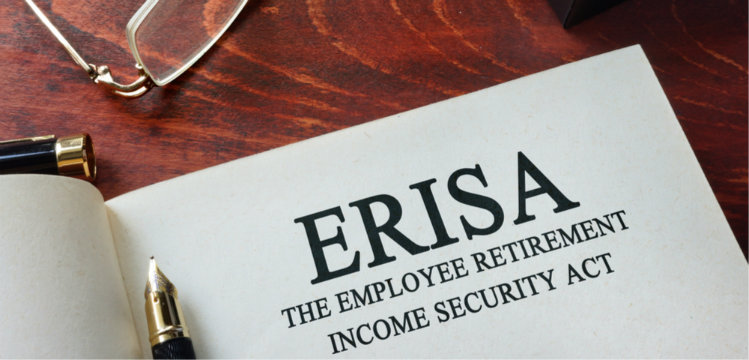What is ERISA?
The Employee Retirement Income Security Act of 1974 (ERISA), enacted September 2, 1974, is an American federal statute that establishes minimum standards for pension plans in private industry and provides for extensive rules on the federal income tax effects of transactions associated with employee benefit plans. ERISA contained sweeping changes in the regulation of pension plans, and created rules regarding reporting and disclosure, funding, vesting, and fiduciary duties. Although ERISA was aimed mostly at “assuring the equitable character” and “financial soundness” of pension plans, the Act contained numerous provisions impacting plans (like profit-sharing plans, and eventually 401(k) plans). For example, ERISA contained a provision that allowed plans to delegate investment responsibility to participants and thereby relieve the plan sponsor from investment responsibility, which today is the basis for participant-directed 401(k) plans.
In 1978, Congress amended the Internal Revenue Code by adding section 401(k), whereby employees are not taxed on income they choose to receive as deferred compensation rather than direct compensation. The law went into effect on January 1, 1980. Although a tax code provision permitting cash or deferred arrangements (CODAs) was added in 1978 as Section 401(k), it was not until November 10, 1981 that the IRS formally described the rules for these plans.
The Solo 401k Plan
The “one-participant 401(k) plan” is an IRS approved type of qualified plan, which is suited for business owners who do not have any employees, other than themselves, a business partner, and perhaps their spouse. The one-participant 401(k) plan, also known as a Solo 401k, is not a new type of plan. It is a traditional 401(k) plan that covers only one employee.
The Solo 401k Plan has the same rules and requirements as any other 401(k) plan. The surging interest in these plans is a result of the Economic Growth and Tax Relief Reconciliation Act of 2001 (EGTRRA) tax law change that became effective in 2002. The law changed how salary deferral contributions are treated when calculating the maximum deduction limits for contributions to a 401(k) plan. This change created an opportunity for some people to put away additional amounts toward their retirement.
It was not until the late 1990s that the regulatory climate began to change for 401(k) plans. In 1996, as part of a package of reforms aimed at bolstering small businesses— the Small Business Job Protection Act of 1996 (SBJPA), which Congress enacted to encourage employers to offer retirement plans, including 401(k) plans. The SBJPA simplified nondiscrimination tests and repealed rules imposing limits on the contributions that could be made to a retirement plan by an employee that also participated in a DB plan. In addition, starting in the late 1990s, the IRS issued a series of rulings allowing automatic enrollment.
EGTRRA contained many provisions that affected qualified retirement plans in a positive way. Two of the most significant changes were the increase in the maximum salary deferral amount for 401(k) plans along with a “catch-up” contribution and the ability to receive an allocation under the plan.
According to the IRS, there are approximately one million private retirement plans covering over 99 million participants.
IRS Publication 560 sets forth the general rules pertaining to a small business retirement plan, such as a Solo 401k Plan.









